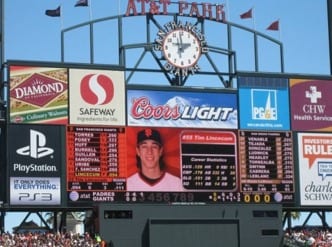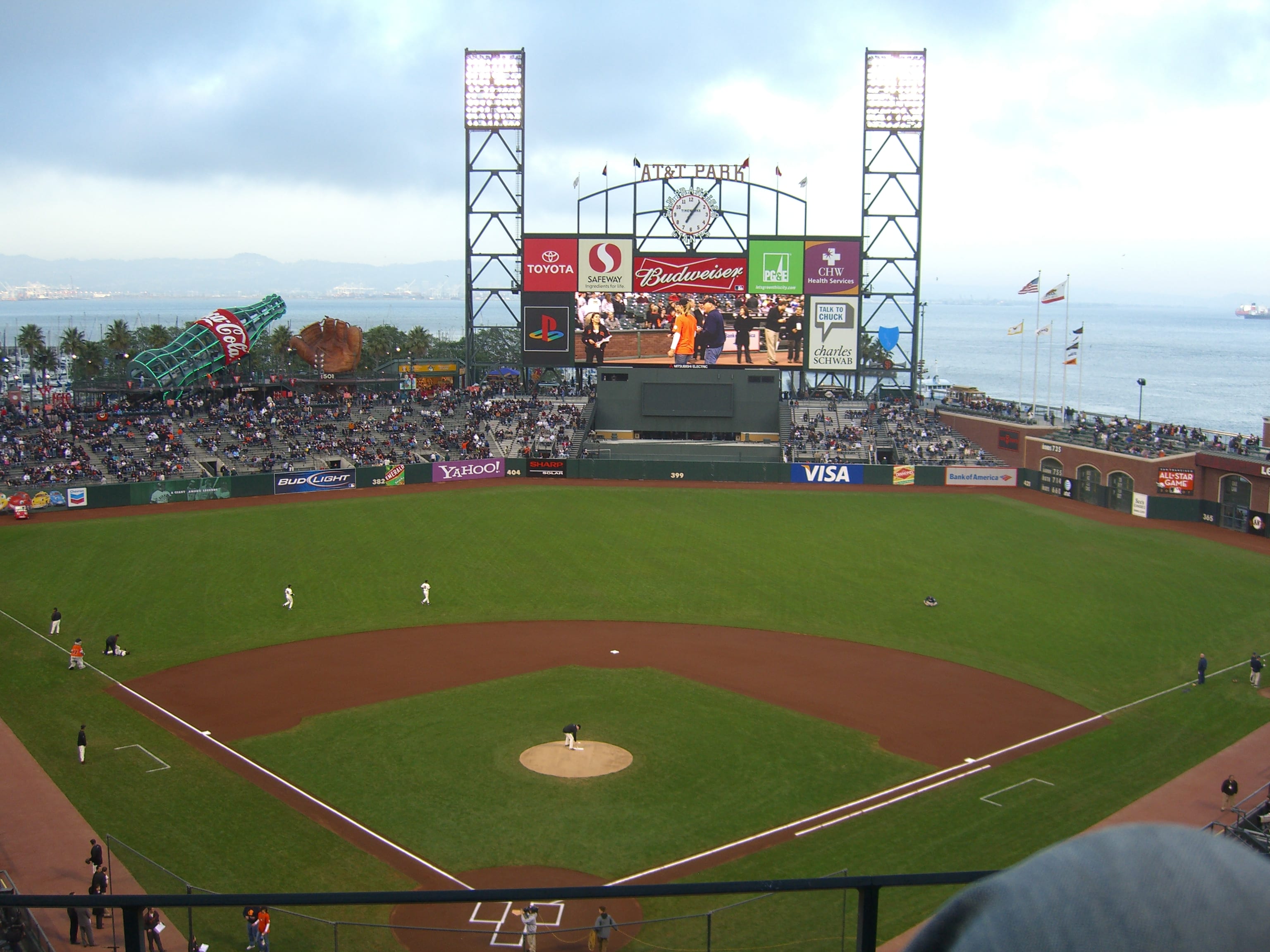When your flat-screen TV goes on the fritz, you take it back to where you bought it or send it back to the manufacturer. Not so simple, however, for Major League Baseball franchises that need repairs on their flat screens — the giant high-def scoreboards that adorn most MLB parks. At San Francisco’s AT&T Park, home to the San Francisco Giants, basic field service just doesn’t cut it. So complex and critical is the stadium’s 103-foot wide, three-story-tall video board that the Giants employ their own full-time service guru — John Tyler, Manager of Video and Scoreboard Operations — to keep the Mitsubishi-made video monster working year-round, without critical breakdowns.

The Job
Service central for the board is the control room in the stadium’s second deck behind home plate, where Tyler directs a production and service team of 15 to 20 who control the scoreboard content as well as the smaller video screens around the stadium. Last summer, black spots started appearing on the board as dozens of 1-foot light panels — the board has more than 3,000 — began to fail. Apart from exposure to salty breeze of San Francisco Bay, the boards likely suffered from faulty electronics soldering in the manufacturing process.
Once Tyler’s team began to spot broken panels, they mapped their coordinates and dispatched service crew to climb the stairwells behind the screen and start replacing them. It’s a tricky process, too, as he explains in a video filmed by The SmartVan:
The Tools
The service team has access to two stairwells behind the video board. From there, they used a simple socket-like tool to dislodge faulty panels from the back of the screen. “It’s basically just a nut driver,” Tyler said. “Mitsubishi made me a custom one where it bends so I can get in between the cabinets because some of the ones in the corners you have to go at it off-angle.” Each panel has 12 to 15 screws.
The Team
Tyler has a large group of technical personnel in the booth who help him come up with the script for pregame, in-game and postgame video content, and then make sure it shows up correctly on the screens. He also oversees cameramen throughout the stadium who pick up action on the field as well as fans in the stands. When the board went on the fritz, Mitsubishi sent in resources to help but main troubleshooting fell to Tyler, who says he’s changed out about 50 panels himself in the past five years.
One field service firm, San Francisco-based Crown Electric, also chipped in. “Mitsubishi hired them to get us through certain things,” Tyler explains. “I have a lot of duties and can’t be expected to replace five units every three days or whatever it was. Crown came in and helped me replace units. I’d say, ‘Okay, here’s six units, go ahead and just go to the coordinates.’ When I gave him the X/Y coordinates he would go in the back and pull them out and swap them. Then I’d have to send them back to Pittsburgh, then they would send them back to Japan for analysis.”
During the postseason, with more on the line for everyone on and off the field, Mitsubishi dispatched service reps to AT&T Park. “They stepped up, to their credit,” Tyler said. “They had people on site providing support for our high profile games.”
Play Ball
 Now that the 2011 season’s in full swing, Tyler’s happy to have to worry about normal things — like which inning to run the “Kiss Cam” on the video board — instead of locating and fixing broken light panels. But if the problem arises again, instead of feeling like a rookie playing a new position he’s prepared like an experienced vet.
Now that the 2011 season’s in full swing, Tyler’s happy to have to worry about normal things — like which inning to run the “Kiss Cam” on the video board — instead of locating and fixing broken light panels. But if the problem arises again, instead of feeling like a rookie playing a new position he’s prepared like an experienced vet.
“I’m not a Mitsubishi technician or engineer by any means, but just doing it enough you get a sense of if you see something out there, you kind of know what the issue is,” said Tyler. Like a lot of technicians in ballparks and out in the field, Tyler experienced an unforeseen and tough to explain problem, and fixed it to the best of his ability.


Share this: